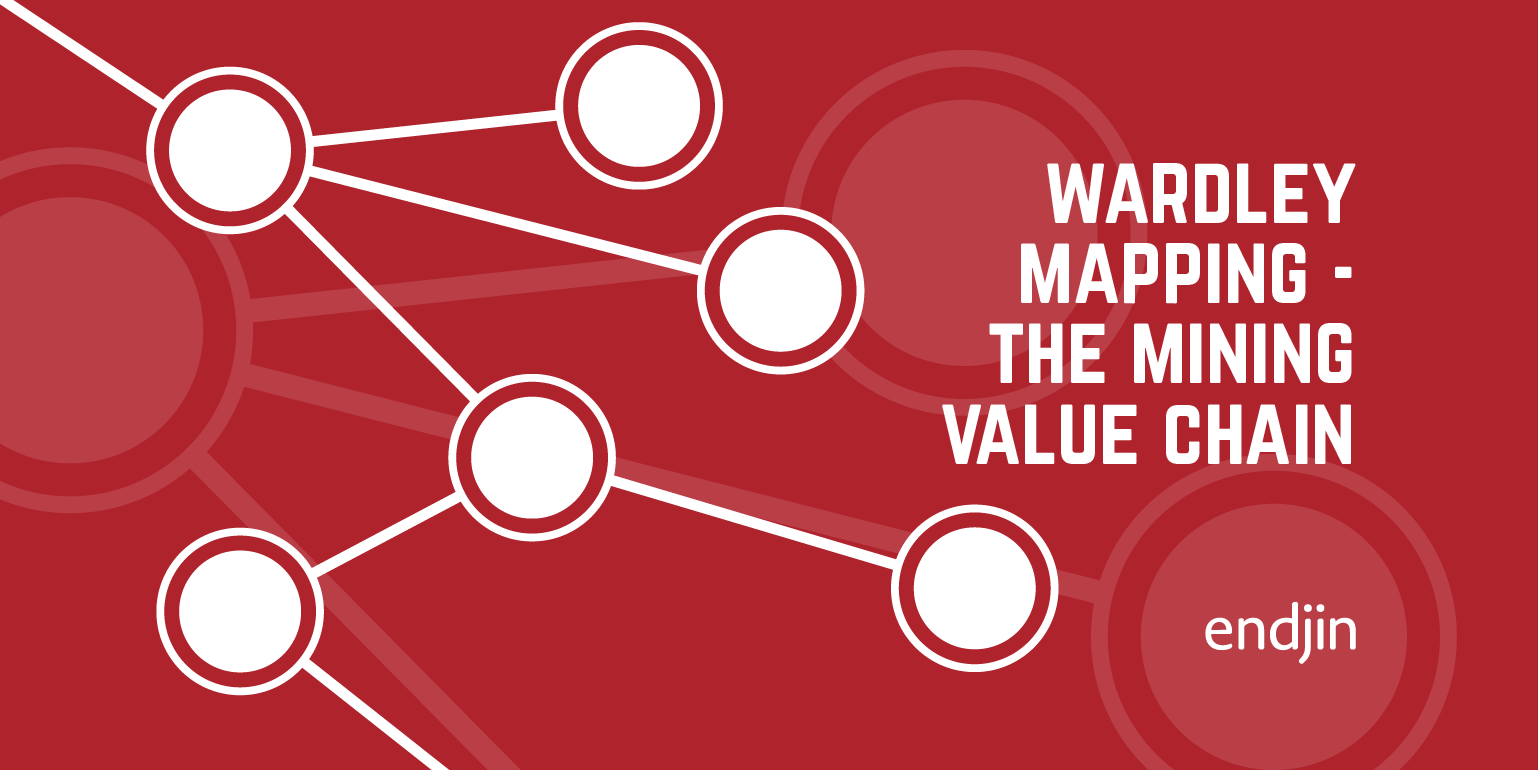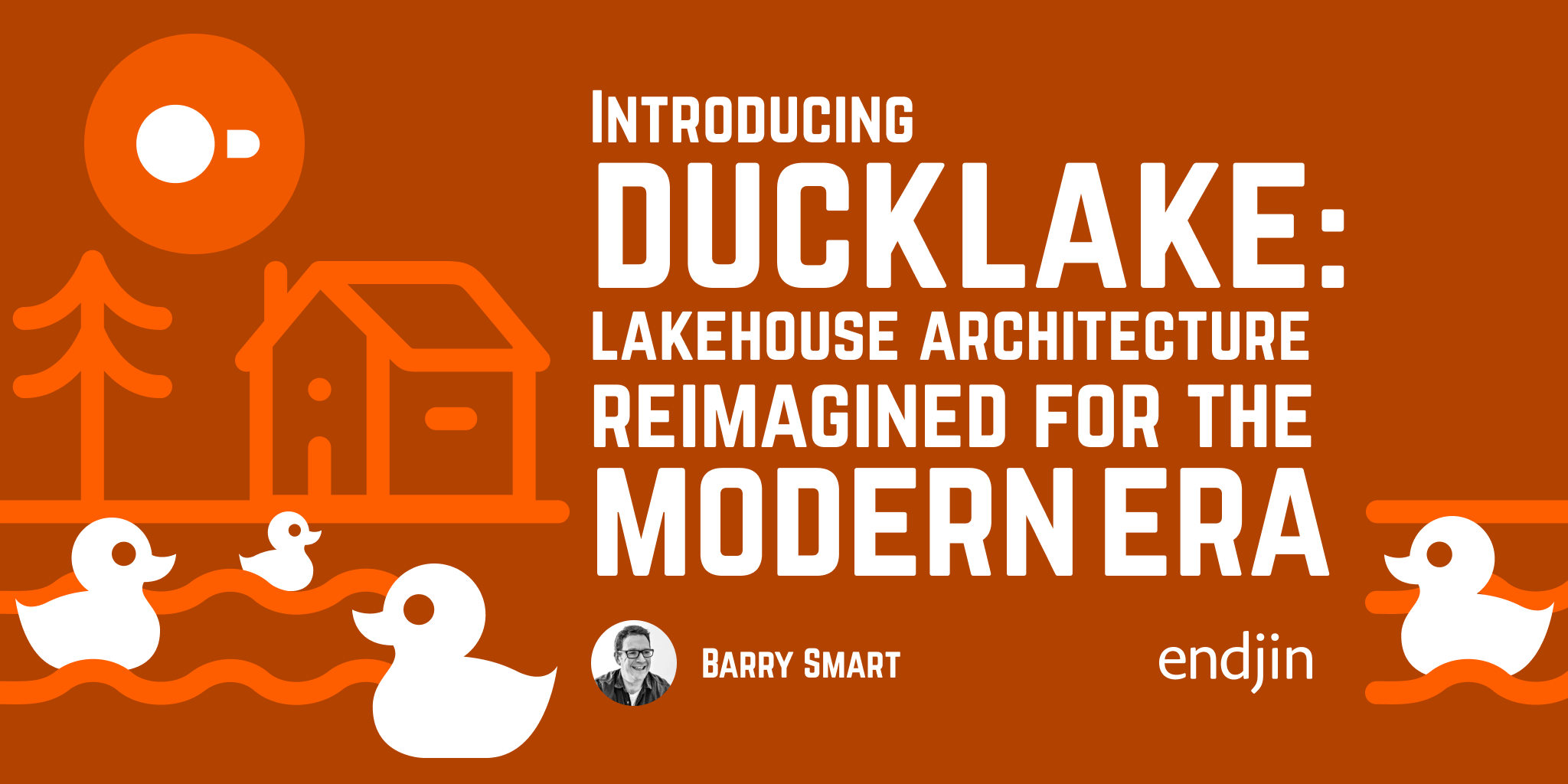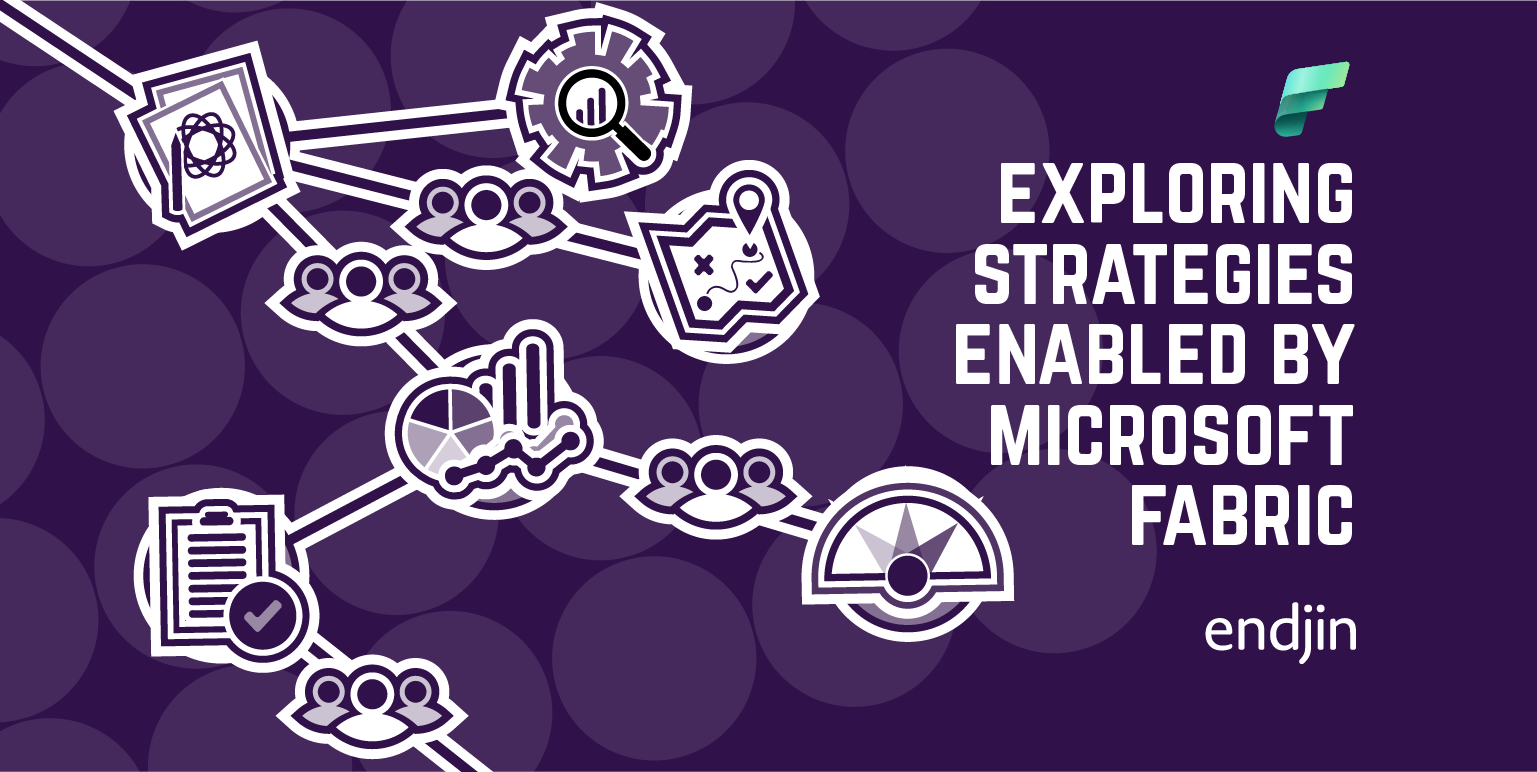Wardley Mapping - Exploring the Mining Value Chain

TLDR; Wardley Mapping can be applied to the mining industry to explain how it is already benefitting from digitalisation and to explore future digital strategies it could employ to achieve its goals.
This article assumes you are familiar with Wardley Mapping. For an introduction to Wardley Mapping, refer to A Strategy and Wardley Mapping Primer by Dave Hora.
From the industrial to the digital age
The year was 1776, and a new machine was about to change the world. James Watt had invented the steam engine, a device that could create vast quantities of physical power. The industrial revolution was born, transforming the world in which we live. Mining flourished in the industrial age, by taking direct advantage of Watt's steam engine to meet the huge demand that was placed upon it for resources.
Fast forward two centuries and we are witnessing another revolution. This time, digital technology and data are being used to create vast quantities of thinking power. What was previously thought of as science fiction is now available to millions of people through their smartphones and other digital devices. Problems that were seemingly intractable can now be solved by highly sophisticated machines powered up by vast quantities of data.
Mining has begun to take advantage of this new digital age (we explore this in more detail later in this blog). But can it benefit as much from data and digital technology as it did from Watt's steam engine?
The industrial age reached its peak in the second half of the 20th century giving many industries, including mining, a period of relative stability. But that stability is now being disrupted by the digital age, which is creating new paradigms and possibilities. Many sectors are in a race to adapt and innovate, or risk being left behind. There are plenty of examples of companies that failed to keep up with the digital disruption, such as Kodak, Blockbuster, and HMV, and were overtaken by new players like Apple, Netflix, and Spotify.
Could we see a similar level of "digital disruption" in mining? How can mining companies make sure they are on the right side of this disruption?
By its very nature, mining is firmly embedded in the physical world. It is not exposed to the same level of digitalisation as the photography, movie and music industry examples above because the end product is a physical material. The high cost of entry and regulations also act as a barrier to the threat of big tech in mining.
In a recent community report Mining and Metals: Trends, Challenges and the Way Forward the World Economic sets out the transformative trends that will shape the mining industry. What is stark is the critical role that the mining industry will play in enabling a global transition towards "net zero". The report states:
The energy transition is set to increase the demand for materials, and numerous industries are expected to require more minerals in the near future.
The World Bank estimates that the industry will need to ramp up production by nearly 500 percent by 2050 to meet global climate change targets by providing the raw minerals required for renewable energy technologies such as solar and wind. How can the industry leverage digital technology and data to meet these and other demands?
The digital revolution is not an existential threat, but an opportunity for mining to help it meet the range of new demands that are being placed on it not just to increase production, but also to meet market pressures, globalisation challenges, regulatory pressure and increasing awareness from society to protect the environment. The industry has the potential to become a leader in the digital age, just as it was in the industrial age. Are mining companies ready to take on this challenge to create a new era of mining that is safer, more efficient, and has a lower impact on the environment?
Mapping the Mining Value Chain
In order to evaluate the potential impact of data and AI on a mining operation, a generic mining value chain is created. Value flows from left to right. This is set out below:
The key activities are:
- Demand – demand is used to drive investment in mining.
- Exploration – seeks to discover new reserves of resources that are in demand.
- Construction – once a new reserve has been identified, if the business case stands and the required licenses and permits are granted, the mine facilities are constructed.
- Extraction – once the mine is operational, extraction of the raw resource commences.
- Processing – the raw resources is often processed on site to refine it. This often generates waste that needs to be managed.
- Distribution – mining operations are generally part of a global supply chain which enables the refined resources to locations where it will be consumed.
- Supply – the refined resource is supplied to customers, generating revenue.
The map below plots the generic mining value chain above onto the two dimensional surface of a Wardley Map.
- Exploration is furthest left on the map to reflect that this activity is the most uncertain and is the least standardised part of the process, often relying on a small number of highly experienced individuals to interpret the data gathered from exploration activities.
- The Distribution activity is the furthest right on the map to reflect that this activity exploits the global shipping and transportation networks that can be considered a commodity.
- The Demand and Supply activities are nearest the top of the map to reflect they are the most visible to stakeholders.
We now use this top level Wardley Map to explore two areas on the value chain where digital technology and data are being used to transform mining operations and how this could provide a platform for further waves of innovation.
Using a Wardley Map to develop an Exploration strategy
The Wardley Map illustrated below examines the "Exploration" stage of the mining value chain. The strategic goals are highlighted at the top of the map: to reduce the uncertainty process, to improve the return on investment and to find new reserves that can be exploited with minimal impact to communities and the environment.
To meet these goals, the strategy is to evolve Exploration. This is represented by a movement to the right on the map, signifying a desire to move Exploration out of the Genesis zone, which represents activities that are described as "unpredictable", to become more certain.
The map explores the lower level activities that support Exploration showing how these are being evolved to support evolution at the higher level. This analysis is based on the wide-ranging recommendations set out in the article Tackling the Crisis in Mineral Exploration published by the Boston Consulting Group in 2015.

One striking aspect of the value chain is that it is cyclical. The link between the Analysis and the Set Exploration Strategy activity sets up a positive feedback loop where data driven insights can be used to inform future exploration strategies.
The movement of individual elements is indicated by the dashed directed lines:
Set Exploration Strategy – is shifting right on the map due to a strong set of recommendations that remove uncertainty, such as the use of the feedback loop described above and a commitment to "Boots & Hammers" – i.e. to commit to putting resources in the field.
Identify Viable Locations – movement here reflects initiatives such as the Virtual Geophysics Laboratory (VGL) in Australia which curates open geological and geophysical data. This provides exploration teams with access to continent wide geological data that is shared through this platform. It also highlights environmental, cultural and land access constraints.
Collect Data From The Field – this activity is becoming cheaper, more accessible and reliable as a result of a wide array of innovation in the drilling, geophysical and geochemical activities that support it.
Process Data – is benefitting from a transition from analogue to digital and the availability of Cloud Native Analytics Platforms (such as Microsoft Fabric) to process the vast quantities of data that are collected in the field. This enables the application of techniques such as 3D modelling to unlock insights from that data.
Analysis – the paper talks about the "Goldcorp Challenge" an example of crowd-sourcing, where Goldcorp's CEO published 400 Megabytes of geological data, offering a prize of $575,000 to anyone who could identify likely locations for deposits in the company's Red Lake gold mine. Over 1,000 submissions came in from all over the world, with the winner being a team from Australia. The outcome was that Goldcorp was able to exploit previously unidentified deposits and extract $6 Billion worth of gold.
Talent Management – the importance of attracting, retaining and developing talent is identified with a commitment to investing in activities such as mentoring. This reduces the uncertainty of retaining the skills and knowledge required to sustain an effective exploration function. Part of this is to re-define and re-brand these roles as it pivots away from unappealing physical work and repetitive tasks into a role which is augmented by technology and a greater emphasis on high value cognitive work. This theme ties into the second case study below.
This approach allows the key recommendations from a paper consisting of nearly 8,000 words to be condensed onto a A4 sheet of paper. The use of a visual tool engages stakeholders, encourages the map to be explored and challenged, enabling a common understanding to be developed and new ideas to be formulated.
One challenge might be: in the 8 years since this paper was published, how has the landscape evolved? What new innovations and strategies have emerged that could be used to drive further evolution of the process?
For example, could a Machine Algorithm be trained by high quality training data that has been curated by experienced geologists to assess the 3D models of data collected in the field to identify deposits? This is highlighted in green on the map. Medical imaging is currently leading the way with this approach, for example trained machine learning models have been found to be as effective as orthopaedic surgeons in detecting fractures from radiographs. Could a machine learning algorithm perform as well as an experienced geologist at flagging likely locations for mineral deposits?
Using a Wardley Map to develop an Extraction strategy
The Wardley Map illustrated below has been developed for the "Extraction" stage of the mining value chain. The map is based on the LASC Longwall Automation: Case Study report written by Acil Allen Consulting in 2018 which explores the impact of the Longwall Automation Steering Committee (LASC) Longwall Automation project on the value chain of a modern coal mine.
The strategic goals are captured along the top edge of the map: to increase productivity, improve working & safety conditions, reduce environmental impact and reduce production costs.
The Wardley Map shows how this work has evolved Extraction (i.e. shift it to the right on the map), out of the Custom Built zone towards the Product stage of evolution which represents activities that have lower rates of failure and greater efficiency.
What is striking about the map is that the direct connection between the Longwall Operations and OEM Longwall Mining Equipment has been severed. Historically, the operators would have been physically present on the longwall (dotted line). Under this strategy, an array of digital technologies creates a virtual bridge between the operator and the equipment at the coalface, allowing them to work remotely (in safer, more comfortable working conditions). This digitalisation of the interface allows software to be introduced to assist in optimising longwall operations.
The strategy is captured as "movement" within the map indicated by the dashed directed lines:
This innovation was triggered by the availability of a high quality Inertial Navigation System (INS). This provides a "productionised" solution to OEMs that can be integrated into their equipment. This enables the position of the equipment to be tracked in real time relative to the coal face.
The INS has enabled the creation of a Shear Position Management System that is available under license to Original Equipment Manufacturers (OEMs) who produce mining equipment.
The Shear Position Management System has been fitted to OEM Longwall Mining Equipment – this has "digitalised" this equipment enabling it to be monitored and controlled using digital technology.
Longwall Operations – has been transformed because operators now monitor and control the equipment remotely from the surface, this relies on a chain of technology infrastructure (networking, storage and compute) and software that enables operators to interact with the plant through a software Human Computer Interface. This has involved a significant investment in software engineering.
There are some important features of this project that contributed towards the overall success and are relevant to any project involving data and digital technology:
Clear goal – the project was aided by having a well-defined purpose. The remote operations of longwall mining was seen by the industry as the number one priority to provide a step-change in personnel health, productivity and environmental sustainability.
Commercialisation and Licensing –was a significant enabler for the project. By putting in place a non-exclusive technology licensing model the project was able to gain commitment (and therefore funding) from industry. Licensing of intellectual property (IP) is a significant consideration in any digital project whether the IP is being created "in house" or being acquired from another party.
Collaboration – led by CSIRO (Commonwealth Scientific and Industrial Research Organisation) this project has involved significant levels of collaboration between CSIRO, mining companies and original equipment manufacturers (OEMs). This collaboration has been enabled by the clear purpose and the way in which value has been shared through the commercialisation and licensing arrangements of the product.
Long term commitment - The project was incubated in the late 1990s and has taken 20 years to scale up. This has involved phases such as research & development, testing, commercialisation and now ongoing support to OEMs who are adopting the technology. Over this period, it has consumed $13.5M in expenditure. It is not unusual for digital transformation projects such as these to require this degree of long term commitment and funding.
Multi-disciplinary – the project required input across a broad range of disciplines. This included traditional engineering skills; such as Mining, Mechanical and Electrical Engineering and Process Control; as well as digital skills such as Software and Mechatronic Engineering. This is not unusual in digital transformation projects where diversity is often a significant contributor to success.
The Longwall Automation Project now provides a foundation upon which future innovations can be built. How could new technologies be introduced to enable the value chain to evolve further? Some ideas are added to the Wardley Map in green:
Intelligent Agent – could a machine learning model be trained to act as an intelligent agents to assist human operators?
Virtual Reality (VR) and Augmented Reality (AR) - could VR and AR be lifted from the gaming sector and used to provide operators with an enhanced Human Computer Interface by enabling them to immerse themselves in a 3D model of the coal face? Or to enable maintenance engineers to work in a hybrid environment where digital information is overlaid onto the physical world that they perceive using technologies such as HoloLens?
Anomaly Detection – could anomaly detection algorithms be used to process data streaming from the OEM equipment in real time, providing an early warning system for equipment failure? Enabling more proactive maintenance of the equipment that can be planned to prevent costly forced outages?
3D Printing to produce spare parts on demand on location, to reduce reliance on traditional supply chains. This technology is being used by the navy to "print" spare parts on submarines to avoid having to go into dock when on active duty and lower the burden on the suppliers who produce spare parts.
This approach highlights how existing elements such as Operational Data can be re-used to support this evolution, it also highlights new capabilities (such as Data Science) or artifacts (such as Training Data) that will need to be established to enable the strategy to succeed.
Summing Up
This blog has highlighted two examples where the mining industry has started to exploit the opportunities of the digital age. We recommend that mining companies should use tools such as Wardley Mapping to explore how a digital future could help them achieve their goals and to embed digital thinking at the core of their business strategy. Use this approach to gain consensus, develop a shared understanding and divert finite innovation resources to the areas os the business where significant benefits can be achieved.
The underlying technology is becoming more accessible as big tech continues to provide increasingly sophisticated platforms and technologies to the market. Mining companies should seek to stay up to date with the latest developments in the technology sector and should consider forming strategic partnerships with tech companies to allow them to innovate at pace and at scale.
With the right digital infrastructure and leadership in place, digital technology can play a critical role in helping the mining industry achieve the goals of improving safety, driving efficiency, increasing profitability, and minimising the impact on communities and the environment.









